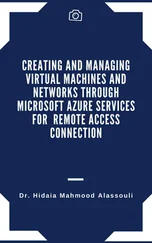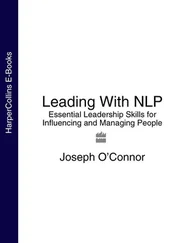Innovation is also the result of confrontation. An idea must go through a phase of enrichment, particularly by confronting the expertise of people with whom a relationship of trust has been built. Managing a network of internal and external experts is a crucial aspect of engineering in the service of innovation. There can be no management of innovative projects without collaboration (third bias).
2.3.2. Second bias: any innovation process requires contextualization of the situation
Each innovation context is specific according to the nature of the innovation, the degree of novelty or the field of study. It is therefore essential, before committing further to the project, to carry out a watch in order to determine the variables of the macro-environment that could positively or negatively influence the innovative project. It is therefore common to use a macro-environmental analysis tool, such as PESTEL, to assess the political, economic, socio-cultural, technological, ecological and legal dimensions associated with the field of study. It can be carried out at several scales depending on the case: local, national and international. Moreover, in order to refine the analysis, the use of a SWOT analysis allows us to qualify the PESTEL data as opportunities and/or as threats and to verify, from this preliminary phase, the resources available to the organization to support future innovation. Evaluating an organization’s capacity for innovation is a prerequisite for the implementation of an engineering approach (Boly 2004). Indeed, an organization can find itself in difficulty if the innovative project takes it too far away from its core competencies or requires human and financial resources that it does not have. Finally, a fortiori today, as the business environment has become prone to “VUCA” (volatility, uncertainty, complexity and ambiguity), taking into account trends and weak signals in a market proves to be an undeniable asset to create, in fine , a truly disruptive innovation.
This aspect of context analysis and assessment has been facilitated in recent years by the increasing availability of information and data. This also makes it more difficult, in particular because of the availability of tools for data visualization, processing and storage. Work on data mining has found a growing echo in improving the understanding of the project context. It is the same for research on AI. In recent years, this has become an essential tool to help innovative project leaders make the “best” decisions in a complex and uncertain world.
Likewise, as we have already pointed out, needs and requirements analysis is one of the major tools of innovation engineering. Based on the concept of “customer pain” and the highlighting of dissatisfactions, the needs analysis makes it possible to refine the first part of an innovation process known as the “front end” or the upstream phase. If, in addition, the needs analysis is combined with a prospective analysis, then the analysis can be refined by looking at implicit and unspoken dimensions, such as trends and new uses. In this way, a clear vision of the needs and expectations of the parties involved in the innovation project can be obtained and potential scenarios can be developed.
Innovation is therefore systemic. Having this awareness at the beginning of the implementation of an innovation process also means having a perception of the associated project risk.
2.3.3. Third bias: there is no innovative project management without collaboration
For several years, the belief that the success of an innovation lays in hiding it and keeping it well controlled within an organization has been transformed into a new way of acting that is more open and requires internal and external collaboration. Individual value is being replaced by collective value. Indeed, research conducted by the engineering community has led to the development of tools and methods to facilitate this collaboration and to support projects integrating multiple stakeholders around the same objective. As a result, research on the interoperability of objects and systems and on collaborative virtual reality and augmented reality has been widely developed to allow the management of distributed, inter-temporal and inter-organizational knowledge and skills.
This work has enabled us to move from a theoretical concept of collaboration between individuals and organizations, and open innovation, to a method equipped to manage knowledge remotely. Indeed, the technological push has undeniably accelerated the use of external partnerships, be they academic, research, or technology or technique transfer partnerships. In addition, research on collaborative platforms has multiplied, offering opportunities to include in the management of an innovative project a multi-player, multi-skilled and low-cost perspective. While this considerably increases the creative dimension, it has also created new problems of intellectual protection when the production of ideas is collective.
Similarly, research to improve the management of innovation processes has been enriched by the latest work on flexible methods. Indeed, the imperatives of permanent and continuous innovation have shown the limits of traditional project management tools and methods. If these are well adapted for product design/improvement, it is not the same when it comes to innovative projects.
2.3.4. Fourth bias: a universal innovation process does not exist!
The ISO 56002 standard on innovation management correctly places the key moments of an innovation project: identifying opportunities, creating concepts, validating concepts, and developing and deploying solutions. It also specifies that although there is not a universal process model that is applicable for all organizations, it is possible to identify five main “phases” that are more or less always present. The ISO 56002:2019 standard represents those “phases”.
It is therefore commonly accepted today that there is no ideal process for developing an innovative activity; however, there are margins of freedom to be taken.
Although at first glance it seems that innovation is a unique and creative process, and apparently without structure, it has been proven that innovation can benefit from a common framework and standardization (ISO 56002).
There is no typical process leading from an idea to an activity anchored in its environment, but rather an agility in adapting and reorganizing itself according to the evolution of the environment. As a result, agile innovation and innovation agility are the foundations of innovation engineering. It is all about learning to free oneself from any typical model by developing the ability to reconfigure steps, to remove or add steps if necessary. Depending on the very nature of the innovation, whether it is incremental, radical or disruptive, engineering must be at the service of the project and not the other way around. It is therefore obvious that if we are looking for incremental innovation, we are not going to immediately start setting up a creativity session. Rather, we will prefer tools such as competitive intelligence or the search for customer dissatisfaction in order to improve the existing product/process or service at a lower cost and in the short term. However, the more we look for radical innovation, the more open innovation approaches will be used to try to pick up weak signals from the markets. Feeling the unspoken needs of users and establishing foresight-related tools are another way to approach this first phase of an innovation process.
2.3.5. Fifth bias: the importance of materializing and evaluating ideas as early as possible by including users in the process
Concept validation has gradually become a central theme in the innovation engineering process. Indeed, it is at this stage of the process that ideas begin to take shape and can therefore be improved and amended by a collective. Very early on, researchers realized the importance of integrating potential users and their uses as early as possible in order to co-design future products/services/organizations with them. Indeed, testing and experimenting with concepts as early as possible will allow participants to better visualize the scope of the innovation, to better embody it. In fact, rapid prototyping has become the technical support for validating the project progress as early as possible because it provides a physical (prototype) or virtual (3D model) representation of an idea with the possibility, at this stage of the process, of integrating user feedback to improve or even rethink the initial idea.
Читать дальше












